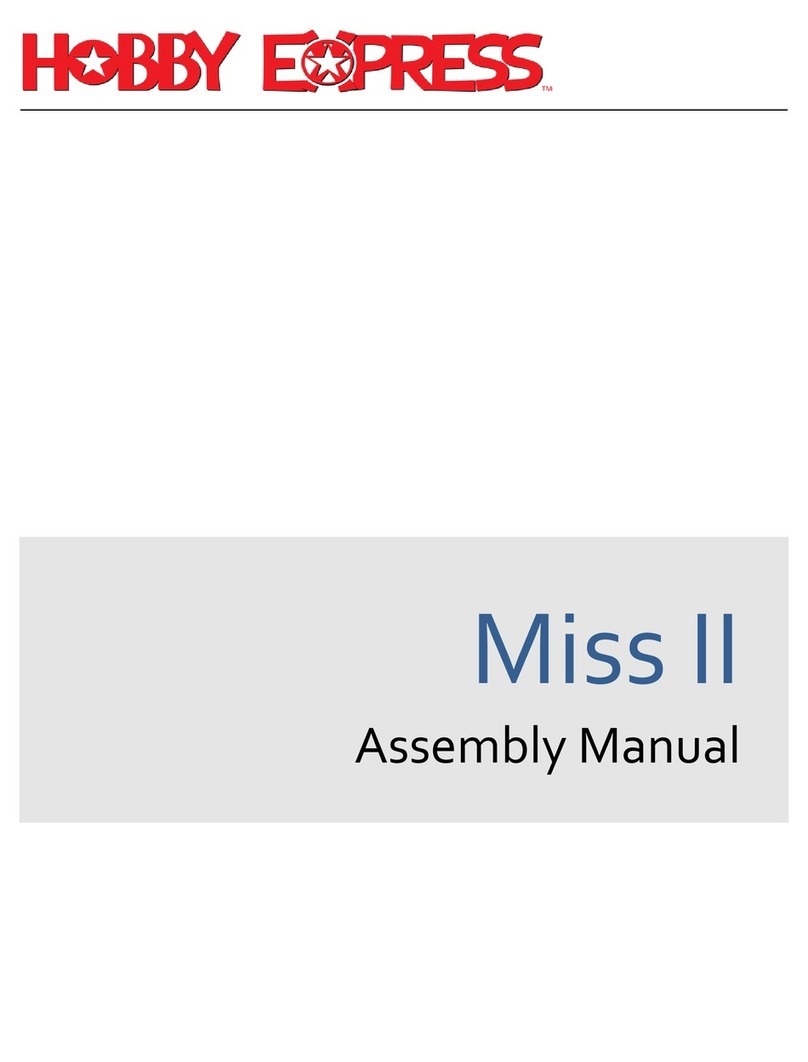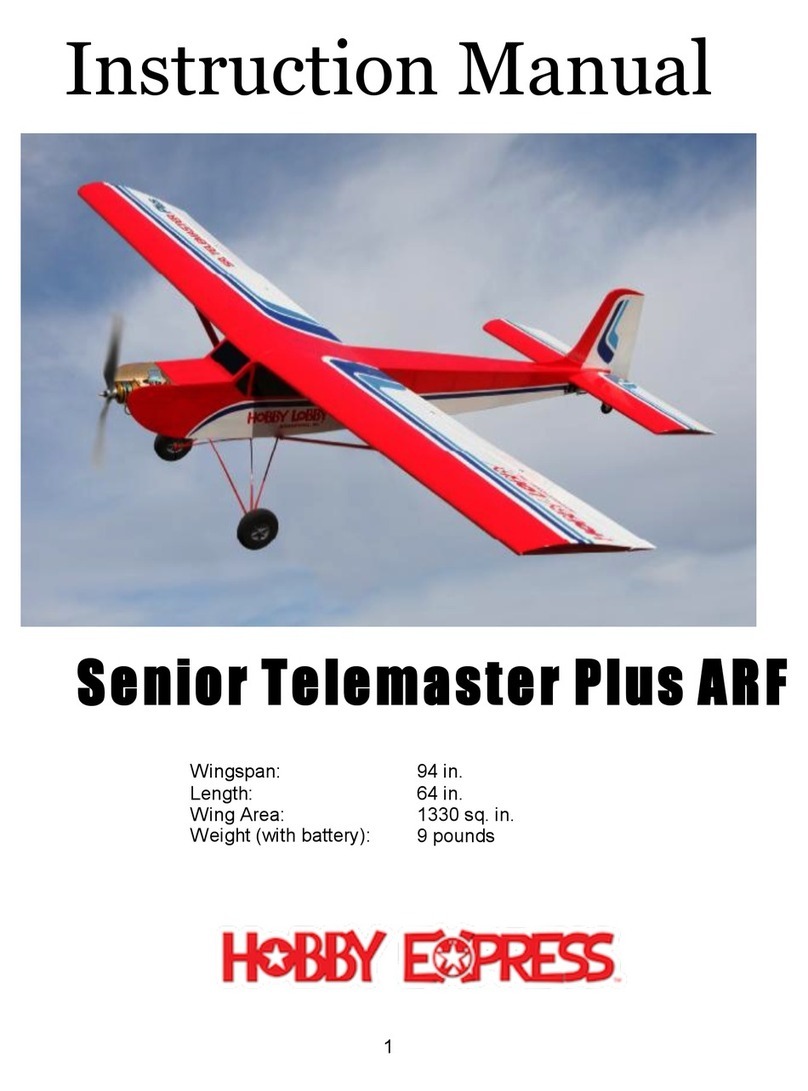
3
c 15 Use the 1/8” dowels to align the hatch (HA)
and the balsa spacer (HA-B) and glue the
spacer to the hatch. Do not get glue on the
dowels.
c 16 Once again using the dowels for alignment,
glue HA-C to spacer HA-B.
c 17
c 12 Glue HMB to the fuselage assembly at the
back of the hatch opening. Install one of the
two magnets into the hole provided at the cen-
ter of HMB.
c 13 Glue a piece of 1/4” triangle stock into the
notch provided in FD at the windshield loca-
tion. Refer to the plans for correct position.
See #1 in photo at right.
c 14 Glue the windshield (WS) to the fuselage just
above the ¼” triangle stock. See #2 in photo
at right.
1
4
3
2
ABOVE: The 1/4” triangle stock (#1) has been glued into the notch
provided and then the windshield (#2) is glued to that and the fuse-
lage. Below that (#3) is the hatch mounting bracket (HMB) with a
1/16” x 3/16” magnet installed in it. The magnet must be ush with
the top of HMB. The landing gear mount (GM) has been installed
to F2 with the landing gear attached with CA and thread.
Install the remaining magnet into the hole in
HA. Note the correct polarity and make the
magnet ush with the bottom of the hatch.
c 18 Place the hatch assembly on the fuselage and
test t the 1/2” triangle stock. You will need to
relieve some material from the triangle stock
to clear the magnet, then glue the triangle
stock to the back of the hatch.
c 18 Sheet the top of the fuselage from F3 to the
tail with the 1/32” x 3” sheet of balsa, cross
grain.
c 11 Carefully align the fuselage bottom sheet-
ing (FB) with the forward fuselage assembly
and glue it from the F1 back to F2. Pull the
tail section together and glue it. Work your
way from aft of the landing gear to the tail
with glue making sure the sides conform to
the shape of the bottom sheeting. Glue in the
bottom braces (FBB) roughly in the locations
indicated on the plans.
HA-C
HA-B
HA
ABOVE: The hatch assembly shown here upside down, note the
magnet at the rear and the 1/2” triangle stock. The magnet should
be ush with the bottom of the hatch.





























